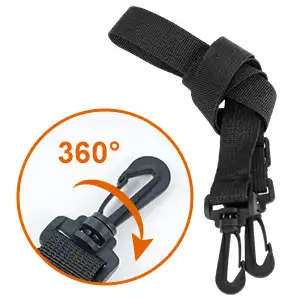How to Build Acoustic Panels Enhance Your Sound Environment
Acoustic panels are a fantastic addition to any space that aims to optimize sound quality, whether it be a home theater, music studio, or a simple room where you want to reduce echoes and control noise. Building your own acoustic panels may seem daunting, but with the right materials and a bit of DIY spirit, you can create effective sound absorbers tailored to your needs. In this guide, we will walk you through the process of building your own acoustic panels from start to finish.
Materials Needed
1. Sound Absorbing Material The most common materials are fiberglass insulation batts, foam panels, or rock wool. For a DIY project, rigid fiberglass boards are often preferred due to their high sound absorption qualities.
2. Wood Frames You will need wood to create a frame for your panels. Common choices include pine boards or plywood.
3. Fabric A breathable fabric to cover the panels is essential. Look for materials like burlap, polyester, or any acoustically transparent fabric that comes in colors that complement your space.
4. Insulation Board This can be cut to fit inside the frames. The thickness should be suited to the type of sound absorption you need; thicker boards tend to absorb low frequencies better.
5. Adhesive or Staple Gun For attaching the fabric to the frame, you'll need either strong adhesive or a staple gun.
6. Wood Glue and Screws To assemble the frame securely.
7. Saw A table saw or miter saw for cutting wood and acoustic panels to the required dimensions.
8. Measuring Tape and Level For precise measurements and ensuring that your panels are hung straight.
9. Screwdriver For assembling the frame if screws are used.
Step-by-Step Process
Step 1 Measure and Cut Your Materials
how to build acoustic panels

Start by determining the size of the acoustic panels you wish to create. Common dimensions range from 2 feet by 4 feet to smaller sizes depending on your available wall space. Use your measuring tape to mark the dimensions on the wood, then carefully cut the wood frames about 1x3 inches thick.
Step 2 Assemble the Frame
Use wood glue and screws to assemble the frame. Ensure that all corners are square by checking with a level. Once put together, sand any rough edges to ensure a smooth finish.
Step 3 Cut the Insulation
Using a utility knife, cut your sound-absorbing material (fiberglass or rock wool) to fit snugly inside the frame. It should be thick enough to absorb sound but not too thick that it bulges out of the frame.
Step 4 Cover the Panels with Fabric
Lay the fabric flat and place the frame on top of it. Pull the fabric tightly around the edges of the frame, ensuring it remains taut. Use a staple gun or adhesive to secure the fabric to the back of the frame. Make sure to leave the edges neat for a professional look.
Step 5 Mount the Acoustic Panels
Determine the best placement for sound absorption in your space. Ideally, panels should be mounted on walls at ear level where reflections most frequently occur. You can hang the panels using picture hooks, Velcro strips, or brackets, depending on the desired aesthetic and permanence.
Finishing Touches
Once the panels are mounted, take a step back and evaluate the overall look. You might consider adding additional panels for even more sound absorption or arranging them in artistic patterns for visual appeal.
Conclusion
Building your own acoustic panels can be a rewarding DIY project that not only enhances the sound quality of a room but also offers an aesthetic upgrade. With a few materials and some handiwork, you can effectively control echo and sound reflections in your space. By following these steps, you'll create functional and attractive acoustic solutions tailored specifically to your environment. Enjoy your enhanced soundscape!
-
Durable Snuffle Mat for Dogs | Mental Enrichment & Slow FeederNewsAug.29,2025
-
Portable Cat Bed for Travel | Cozy, Secure & Multi-functionalNewsAug.28,2025
-
Snuffle Ball Benefits for Indoor DogsNewsAug.22,2025
-
Building Acoustic Panels for Classroom NoiseNewsAug.22,2025
-
Installation Best Practices for Acoustic Art PanelsNewsAug.22,2025
-
Health Benefits from Noise-Reducing Hex Acoustic PanelsNewsAug.22,2025
